9 June, 2004
One kind of important detail that I neglected to mention in the previous post:
Last night at the airport, Amanda received a
phone call from the acting safety coordinator at
University of Fairbanks (organization that helps
run, and run smoothly at Toolik Lake field camp).
One of the pieces of equipment that we are using
had apparently developed a leak. Ordinarily, a
strip of duct tape would fix it right up; in this
case, it was leaking radiation! (In the sound
track of the saga, this point is where the
especially dramatic, slightly dangerous music
starts playing.) The Electron Capture Detector,
or ECD, relies on a small piece of radioactive
nickel foil (the element nickel, not the coin!)
to give off beta parcticles (also known as
high-energy electrons). Over the winter, the
foil had apparently reacted with the air.
What does this mean? Worst-case scenario called
for sending the machine to Texas, requiring us to
prepare samples, run the experiments, but not
collect data until we returned to Ohio State and
Rose Hulman (remember that Rose Hulman is the
university where Penney teaches). After all the
hard work to get here, this option would result
in a much less productive field season, and was
the least favorite option of the researchers.
The team broke into several groups to resolve the
problem: Amanda got on the phone with the
manufacturer. Yo talked with the safety director
and ran additional tests. Penney did research on
impact of radiation at various dosages. After
several harrowing hours, we came to the
realization that the dosages that were leaking
from the back of the ECD were so small that we
could ignore them (10 million times lower than
harmful dosages - Amanda suggested that it was
like spitting in the ocean.) So we decided to
bring the ECD with us and monitor the leakage
periodically throughout our time here. Another
important factor that led to our decision to
bring the ECD is that beta-parcticles are the
sprinters of the radioactive world; after
traveling through only 5 cm of air, they will
have lost nearly all of their energy. (For
readers who have begun to panic, don’t: the last
time you got an X-ray, you were exposed to
radiation millions of times stronger; the last
time you were on a plane, you were exposed to
much stronger radiation as well.) The concern
shifted from the radiation harming us or those
around us to the functionality of the machine.
Keep your fingers crossed that the equipment
works as intended.
The more mundane part of last-minute preparations
included stops at Fred Meyers (a store with
nearly everything… from sushi to handguns to
Scrabble and lamps to Starbucks to gasoline), the
sporting goods store and Radio Shack (I am now
the proud owner of a microphone, the better to
record the beeps and whirrs of the lab, and the
stillness of the night, and the crackling of the
ice in the quiet of the early morning.)
--

We were on the road by 2 p.m., only a couple of hours behind schedule. The trip north was long, but extraordinary. A couple of highlights: We followed the Trans-Alaskan Pipeline, an engineering feat that stretches from Prudhoe Bay at the Arctic Ocean to the ice-free port of Valdez, Alaska, thousands of miles away, through different climatic zones, and over mountain ranges.

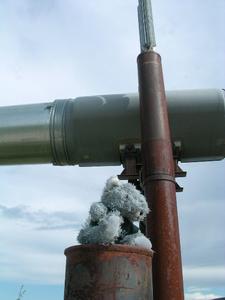

We stopped at the Arctic Circle where I was 'initiated' into the Arctic Club. Initiation rites are a secret, so I won't tell you what they were, but will say that they were so intense that we had a hard time standing still for a photograph.
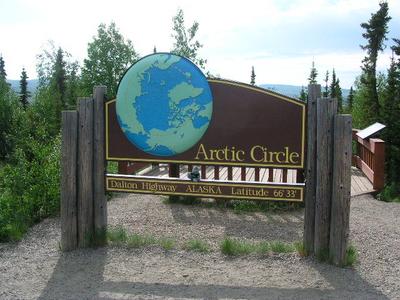
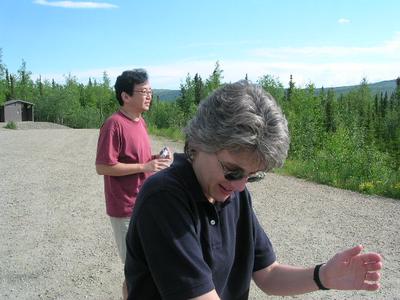
The little traffic we saw was mostly 18-wheelers traveling to and from Prudhoe Bay. The trucks threw up huge clouds of dust on the dirt road that is the Dalton Highway (known to locals simply as 'the haul road')
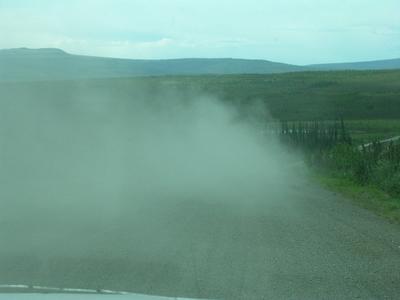
We passed into the dramatic Brooks Range.
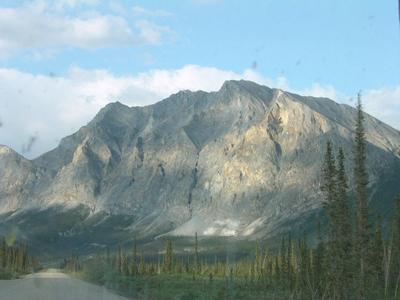
The Brooks Range forms a two-thousand foot wall between the boreal forest and the tundra (including spruce trees)
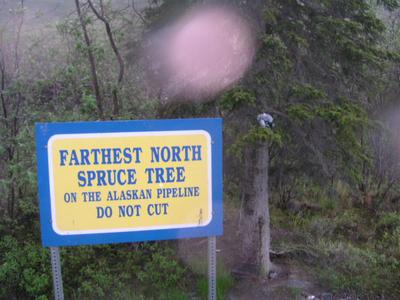
The rain squalls to the east and the sun on the west graced us with rainbows on numerous occasions (the photographs just don't do them justice)
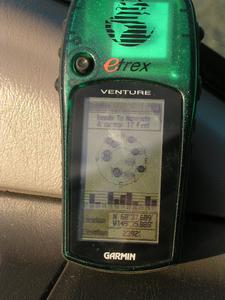
Welcome to the land of the midnight sun; this photograph was taken at 12:45 a.m. in the morning facing due north!

Contact the TEA in the field at
.
If you cannot connect through your browser, copy the
TEA's e-mail address in the "To:" line of
your favorite e-mail package.
|
